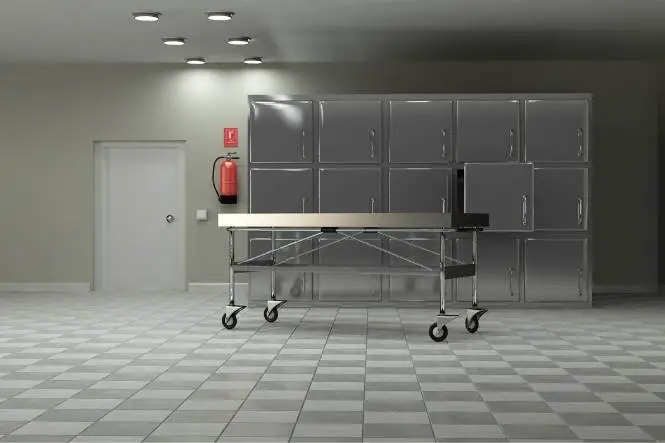An autopsy is performed when there are suspicious circumstances surrounding someone’s death; or when no signs of natural causes can be located.
Stages of an Autopsy
An autopsy takes the form of six stages:
- Y-Incision
- Removal of Organs
- Stomach Contents
- Sample Collection
- Head and Brain examination
- Conclusion
The Y-Incision is the procedure used by the pathologist to open up the breastplate of the deceased and gain access to the body’s major organs; heart, lungs, liver, stomach, spleen etc. This incision is so called because it resembles the shape of the letter Y and is cut from either shoulder to the lower end of the sternum and then downwards in a straight line over the abdomen to the pubis.
After the Y-Incision has been made all of the organs are removed and weighed. This is done because certain types of illness can cause a reduction or increase in the weight of organs such as the heart and/or the lungs. Most times when removed these organs are removed in one unit but sometimes – depending on trauma to the body – are removed in a specific sequence. Blood samples are taken, samples for DNA testing (as and when necessary but not necessary in all autopsies), and toxicological tests are carried out on the heart for signs of poisoning if no physical injuries have manifested themselves.
After this the abdomen is examined and tissue samples taken for analysis and the contents of the stomach are examined. Examining the contents of the stomach can determine when the victim last had a meal and also what that meal consisted of. This is vitally important if determining time of death is a major factor. As with anything we eat the body takes time to digest it, removing valuable nutrients and energy producing elements and this takes time moving through the digestive tract. Meals that are partially digested, completely digested or not digested at all can all lead to time frames being adopted for the time of death. Samples of bile from the gall bladder, ocular (eye) fluid, liver tissue and urine are also taken for toxicology testing as some poisons may not show in one part of the body but will show in others.
Once these procedures have been completed the pathologist will then turn his or her attention to the head area. The first thing they will do is look for signs of head injury, which should have been visible during both external examinations. Sometimes however head trauma cannot be visible simply by sight alone. The pathologist makes a triangular incision across the top of the scalp to reveal the brain and first of all examines it inside the head. Then once this has been completed satisfactorily the brain is removed for a more thorough inspection and also for tissue samples to be taken.
After all of these procedures have been carried out the organs are then placed back into the body and the body is carefully sewn up again.
Once these procedures have been completed it is then the pathologist’s job to report his or her findings to the police who will then be charged with the task of what to do next. It is important to note that although these procedures are carried out more often than not in the case of natural death; if carried out as the result of a violent death or murder then the body is not released to the family for burial until all investigations have been completed and inquests carried out.
- Hardcover Book
- Burton, Julian (Author)
- English (Publication Language)
- 364 Pages - 06/25/2010 (Publication Date) - CRC Press (Publisher)
- Hardcover Book
- Fyfe MD, Billie S. (Author)
- English (Publication Language)
- 424 Pages - 10/06/2015 (Publication Date) - Elsevier (Publisher)
- Hardcover Book
- Burton, Julian (Author)
- English (Publication Language)
- 312 Pages - 07/27/2015 (Publication Date) - CRC Press (Publisher)





